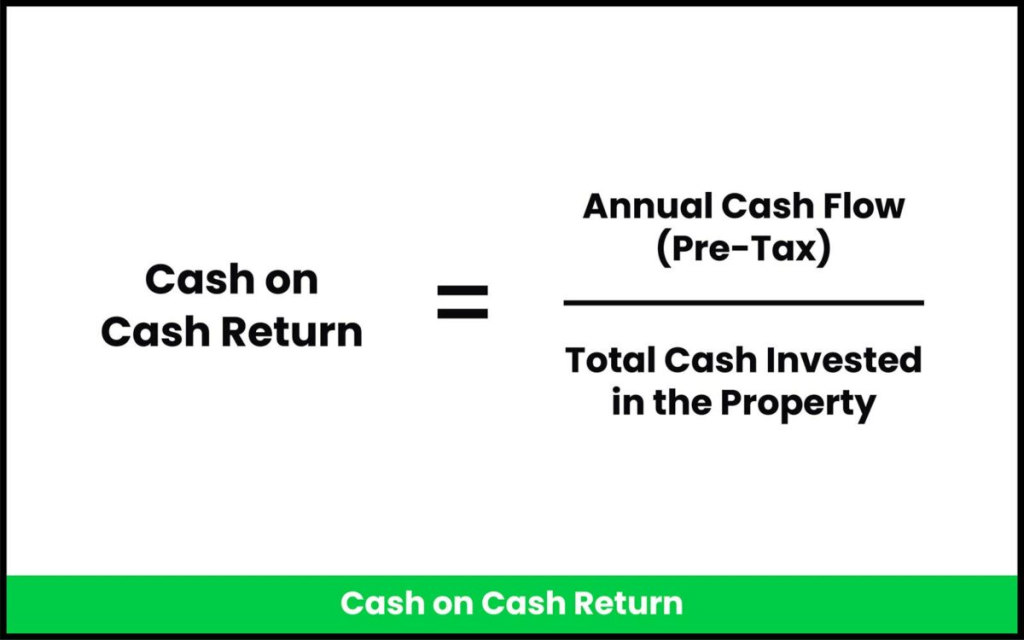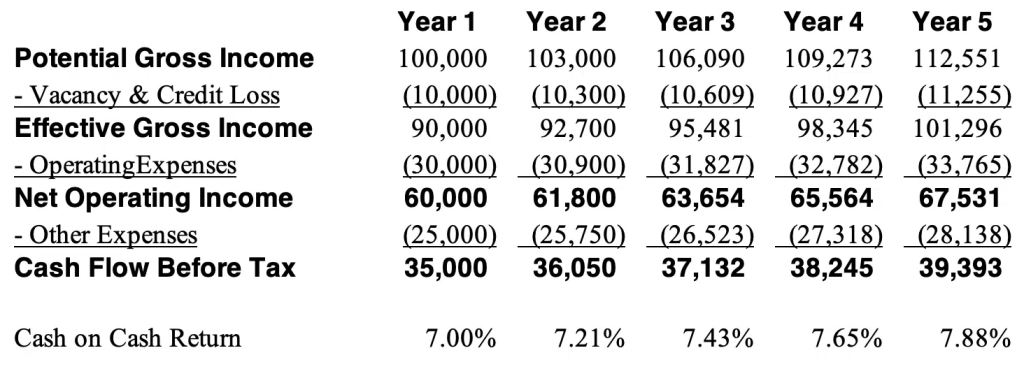Local (European-Specific) Content : Key Metrics and Methods for Evaluating Real Estate Investments in Europe
Objetivos de aprendizaje de la lección:
- Understand Core Investment Metrics: Learn how to use Flujo de fondos, Cap Rate, ROI, GRM, y Cash-on-Cash Return to measure a property’s profitability, efficiency, y investment potential.
- Learn How to Compare Investments: You’ll discover how tools like GRM help compare properties in markets like the U.K., and how metrics like Cash-on-Cash Return support decision-making in places like Berlin o Paris.
- Master Cash Flow Analysis in Europe: Understand how to calculate Gross Operating Income, Operating Expenses, y Net Operating Income in European cities, and how to use these to assess whether a property will generate positive returns.
- Apply Metrics to Real-Life Scenarios: You’ll gain the skills to apply these formulas and concepts to evaluate and compare real properties in cities like Lisbon, Barcelona, y Berlin, even when local market conditions vary.
23.1 Key Metrics and Methods for Evaluating Real Estate Investments in Europe
When investing in European real estate, there are specific key metrics to consider for evaluating the profitability of a property. These include:
- Flujo de fondos: Calculated by subtracting all property-related expenses (e.g., maintenance, taxes) from rental income. European countries, like Alemania o Francia, may have different rental yields depending on local regulations and market conditions.
- Cap Rate: The capitalization rate in Europe is widely used to measure the return on a property, considering the local real estate market. For instance, in Alemania, investors may find lower cap rates due to higher property prices compared to southern European countries like España o Portugal.
- Return on Investment (ROI): This metric calculates the total return from the investment, accounting for cash flow, property appreciation, and tax benefits in European countries. Francia y Italia offer tax deductions that can improve ROI for property investors.
Key Methods:
- Gross Rent Multiplier (GRM): Used in many European markets, GRM is calculated as the property price divided by gross rental income. In markets like the U.K., GRM helps compare properties with different price points.
- Cash-on-Cash Return: This is often used by investors in European cities like Berlin y Paris to assess the annual return relative to the actual cash invested.
Cifra: Cash on Cash Return Formula
Descripción:
The image presents a formula to calculate the “Cash on Cash Return” for real estate investments. The formula is depicted as this formula helps investors determine the annual return on the cash they have invested in a property, excluding the effects of tax.
Conclusiones clave:
- Annual Cash Flow (Pre-Tax): This represents the yearly income generated from the property before considering taxes.
- Total Cash Invested in the Property: This is the total amount of money the investor has put into the property, including down payments, renovations, and other initial costs.
- Cash on Cash Return: This metric provides investors with a percentage that indicates the annual return on their cash investment.
Application of Information:
The Cash on Cash Return is a crucial metric for real estate investors as it provides a clear picture of the profitability of their investment in relation to the cash they have invested. It allows investors to compare the performance of different properties and helps in making informed investment decisions. By understanding this metric, investors can better gauge the efficiency of their investment and its potential for generating positive cash flow.
Cifra: Calculation of Cash on Cash Return for a $500,000 Investment
Descripción:
The graph illustrates the step-by-step calculation of the Cash on Cash Return for a real estate investment of $500,000. The process is as follows:
- Potential Gross Income (PGI): This represents the total income the property could generate without considering any losses or expenses.
- Vacancy and Credit Loss Deduction: From the PGI, any losses due to vacant units or credit defaults are subtracted. This gives a more realistic income figure, accounting for potential non-occupancies or payment defaults.
- Effective Gross Income (EGI): After accounting for vacancy and credit losses, we arrive at the EGI, which is a more accurate representation of the property’s income potential.
- Operating Expenses Deduction: From the EGI, all operating expenses associated with maintaining and running the property are subtracted. This includes costs like maintenance, property management fees, utilities, and more.
- Net Operating Income (NOI): After deducting operating expenses from the EGI, we get the NOI. This represents the income generated from the property after all operational costs but before any financing or capital expenses.
- Other Expenses Deduction: From the NOI, other expenses such as mortgage payments, capital expenditures, or any other financial obligations are subtracted.
- Cash Flow Before Taxes (CFBT): After accounting for all expenses, we get the CFBT, which is the actual cash inflow an investor can expect before considering taxes.
- Cash on Cash Return Calculation: Finally, the CFBT is divided by the initial investment amount ($500,000) to calculate the Cash on Cash Return. This metric provides a percentage that indicates the annual return on the cash investment.
Conclusiones clave:
- The Cash on Cash Return provides a clear picture of the profitability of a real estate investment in relation to the cash invested.
- It accounts for potential income, operational costs, and other financial obligations to give a realistic return figure.
- The metric is crucial for investors to gauge the efficiency of their investment and its potential for generating positive cash flow.
Application of Information:
Understanding the Cash on Cash Return is vital for real estate investors. It allows them to assess the performance of their investment, compare different investment opportunities, and make informed decisions. By following the steps outlined in the graph, investors can get a clear picture of the potential returns and risks associated with a property.
23.3 Analyzing Cash Flow in Europe
Introduction: What is Cash Flow?
In Europe, cash flow refers to the net income after all property-related expenses are deducted from rental income. Positive cash flow indicates profitability, while negative cash flow suggests that the property costs more to maintain than it earns.
Key Metrics and Calculations
- Gross Operating Income (GOI): Total rental income minus vacancy losses in European cities with seasonal fluctuations, like Lisbon o Paris.
- Operating Expenses: Include taxes, management fees, and local maintenance costs, which can vary widely across European countries.
- Net Operating Income (NOI): This is the GOI minus operating expenses. The NOI is critical for determining the profitability of a property in cities like Berlin, where property management costs may be higher.
Analyzing Cash Flow
- Compare Cash Flow to Investment: In markets like Paris o Barcelona, where property prices are high, understanding cash flow in relation to the initial investment is crucial.
- Cash-on-Cash Return: This metric is helpful in European markets where financing terms differ across countries. It helps compare the yield from cash invested.
Información clave de la lección:
- Flujo de fondos is one of the most important metrics for investors. It measures the net income a property generates after all expenses are deducted from rental income. A property with positive cash flow earns more than it costs to maintain, while negative cash flow signals a potential loss.
- Cap Rate, or capitalization rate, helps investors estimate the rate of return based on a property’s income and purchase price. In countries like Alemania, where property prices are high, cap rates tend to be lower, while places like Spain or Portugal may offer higher returns.
- Return on Investment (ROI) includes cash flow, appreciation, and tax benefits to give a complete picture of the investment’s profitability. Countries such as Francia y Italia provide tax deductions that can increase ROI for real estate investors.
- Gross Rent Multiplier (GRM) is a quick comparison tool used in markets like the U.K.. It divides the property price by gross rental income, allowing investors to evaluate which properties offer more income for the price.
- Cash-on-Cash Return shows the annual return you earn based on the cash you invested (excluding loans). It’s especially useful in cities like Paris y Berlin, where financing terms may vary, and helps you compare the efficiency of your investments.
Frase de cierre:
Being able to evaluate real estate investments with the right financial metrics gives you a strong advantage as an investor. These tools help you compare opportunities, estimate returns, and reduce risks, especially when investing across different European countries with unique market conditions.



